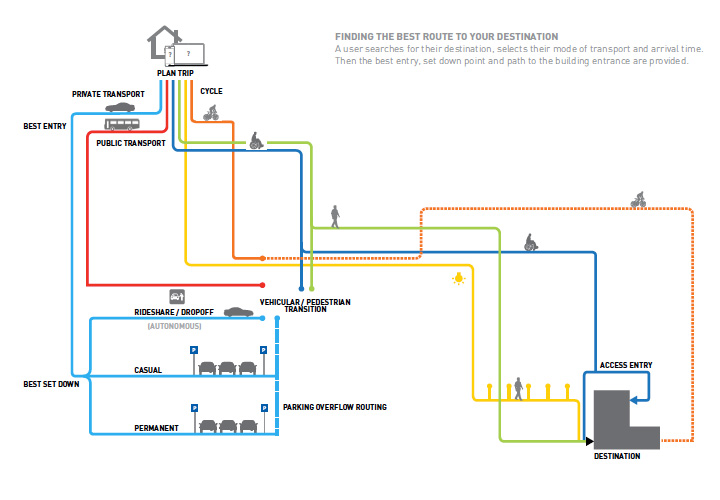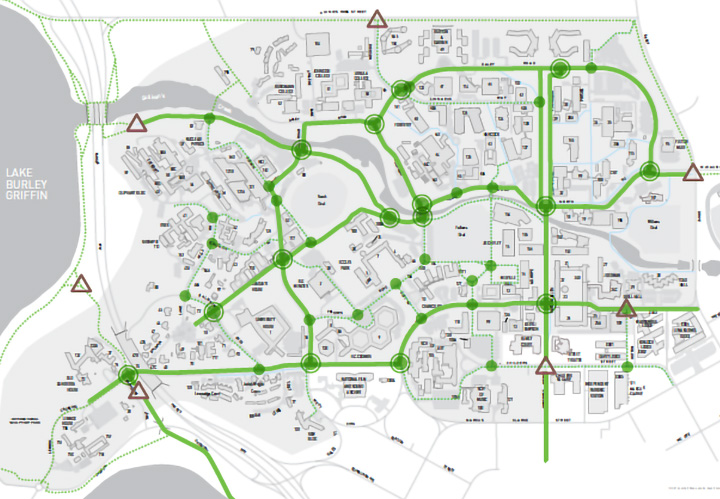Many designers already deploy ‘design thinking’ as a tool for solving problems, but what about ‘systems thinking’ as a tool for design and wayfinding analysis?
Lately, we’ve been learning a little about ‘systems thinking’ as a way of looking at the world differently. It seems like a powerful tool for delivering better design solutions by understanding our clients’ problems at a deeper, systemic level.
So, what is systems thinking all about, you ask? Basically, it is a unique way of looking at a problem – not in isolation but in relation to everything that surrounds it.
Systems thinking means examining links and interactions between the elements that make up a system, as well as examining its purpose and function. A system does not always go the way we want it to: at times it will manifest differently from what was originally intended. By embracing systemic thinking, we can see the big picture and the true purpose of a system. Only then can we identify multiple ways to support positive change.
Systems thinking 101
A good place to begin is acknowledging that changing a system is hard. We live in a world of extraordinary interdependence: COVID-19, the refugee crisis, global warming, poverty – there are all examples of problems that exist across borders, with no easy answer. Each of these problems is made up of underlying structures. Changing those structures means breaking free of linear, short-sighted thinking – no easy feat.
The good news is that to improve a system, there are 12 leverage points at your disposal.
One of these includes ‘information flows’ – an area we are interested in, given our role as information and wayfinding designers. If a system malfunctions, often it’s because the right information isn’t going to the right place, or because the flow of information and feedback loops are not being analysed and anticipated correctly. This validates the many hours of effort we devote on a weekly basis to understanding where people make decisions, and how to give them the information they need when they need it.
We are also exploring the interconnectivity of digital information through our collaborations with PAM, a smart navigation platform, which is highly systems-based.
Tips for aspiring system thinkers
Start by asking ‘But why?’ to determine the systemic causes of the problem you are solving.
Try alternating between a zoomed-in and zoomed-out approach: by zooming in, you will understand the structures of a system; by zooming out, you’ll see how all the different pieces of a system relate and interact.
Look for opportunities to make small changes – ‘leverage points’ – that result in bigger positive impacts. From using metrics to measure progress to shifting the goal post, there are many tools at your disposal, which can affect large and lasting change.
As designers, it’s our job to bring simplicity to seemingly complex, messy scenarios. It’s a big responsibility: we work in a profession where our designs affect people’s lives, directly and indirectly. Imagine what we can achieve if we take the time to think more deeply, challenge assumptions, look for connections and see the big picture.
There is so much to learn, and by no means are we experts in systems thinking. But as the world becomes ever-more tightly interwoven, with ever-bigger problems to solve, we hope that designers can become more ‘system-wise’ to help create positive change.
As systems theorist Donella Meadows says: “I don’t think there are cheap tickets to system change. You have to work at it, whether that means rigorously analyzing a system or rigorously casting off paradigms. In the end, it seems that leverage has less to do with pushing levers than it does with disciplined thinking combined with strategically, profoundly, madly letting go.”


